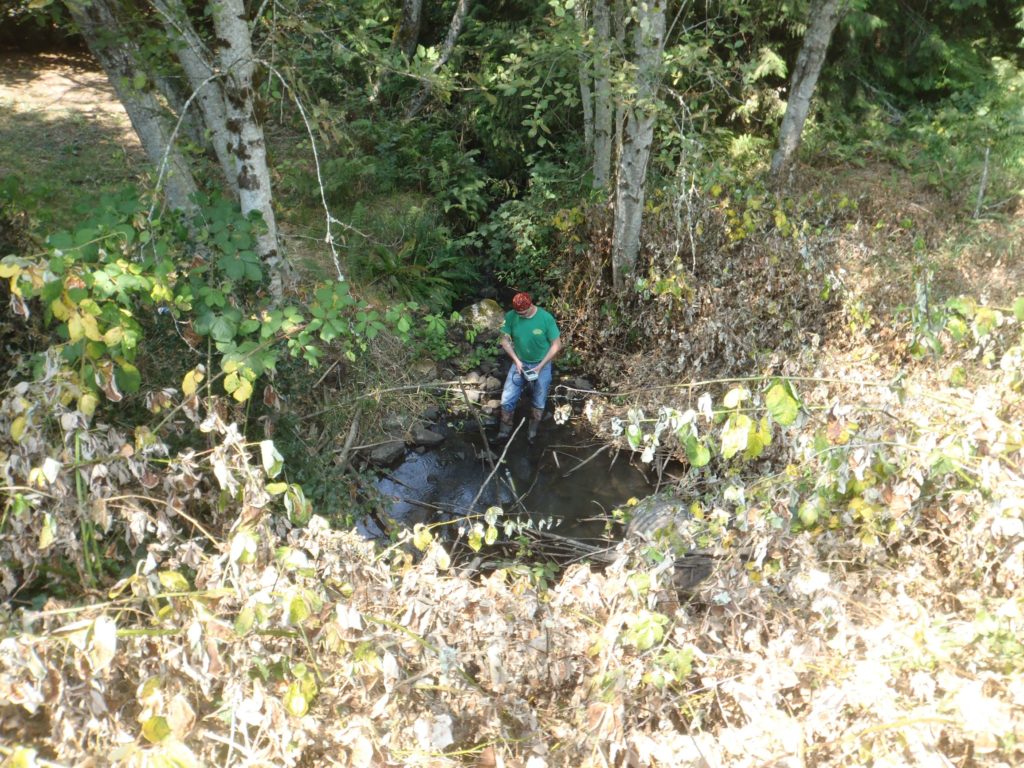High stream temperature is a huge problem for salmon across the Pacific Northwest. For more than 20 years, Johnson Creek Watershed Council and our agency partners have been planting streamside trees to block the direct sun. This in turn shades the streams. As global temperatures rise, we look for additional ways to lower stream temperature, as trees may need decades of growth to fully shade a stream.
In our watershed are about 150 ponds visible from aerial photos, many of which are “inline ponds.” When a stream is dammed to create a pond, the water heats up. Taking an inline pond “offline” or decommissioning it altogether are ways to cool stream temperature efficiently.
This summer, JCWC is measuring temperature and flow at eight of the largest inline ponds in the watershed as step one in prioritizing restoration projects. Simply measuring temperature is not enough, as larger streamflows can result in a higher “heat loading’—the combination of temperature and flow. Stay tuned, as we will have preliminary results next winter.
Thank you East Multnomah Soil & Water Conservation District and Oregon Watershed Enhancement Board for funding this monitoring project!

